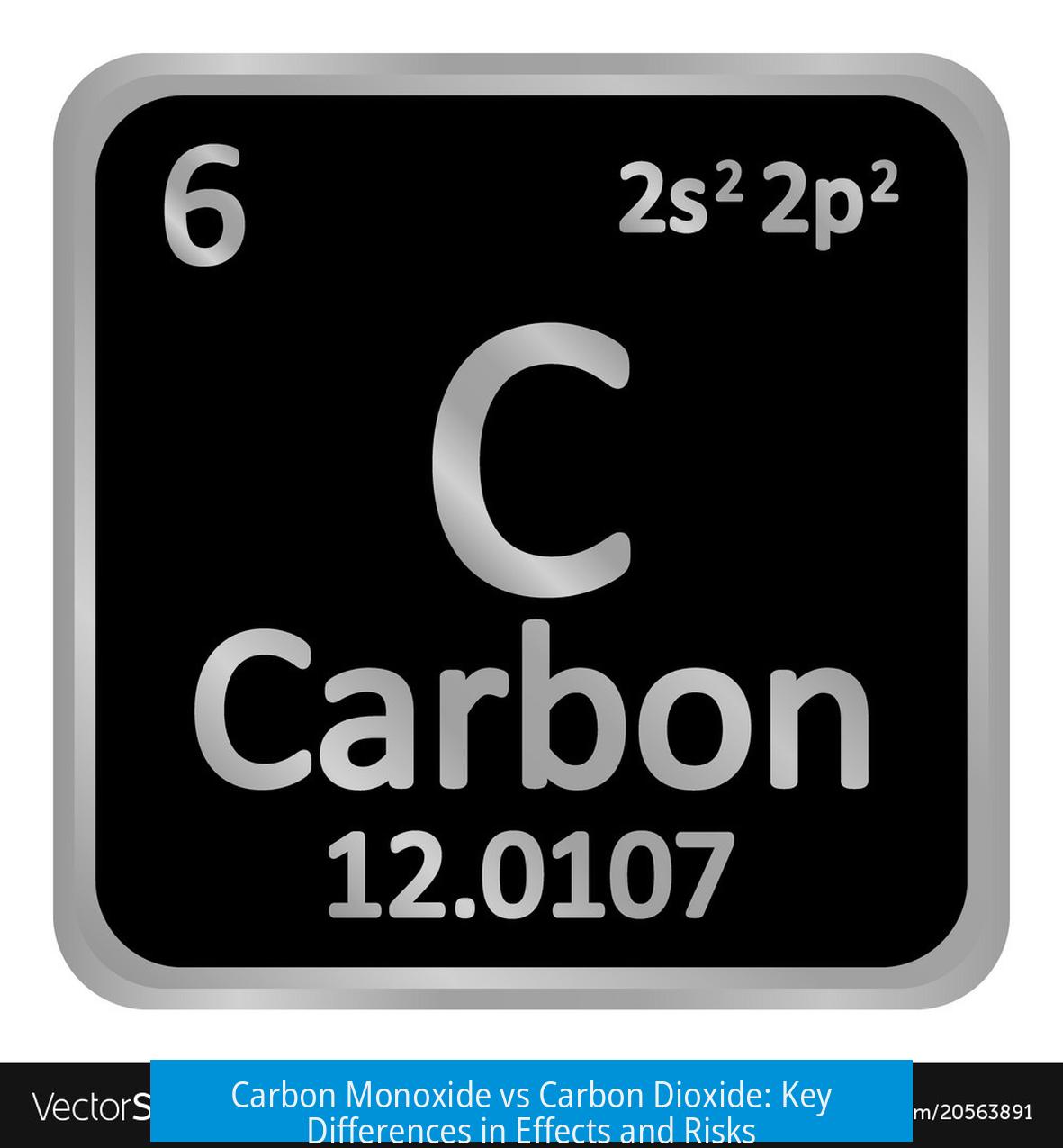Carbon Monoxide vs Carbon Dioxide: Understanding the Differences

Carbon monoxide (CO) and carbon dioxide (CO2) differ fundamentally in how they affect the body. CO acts as a poison by binding strongly and irreversibly to hemoglobin and cellular components, preventing oxygen transport and cellular respiration. In contrast, CO2 causes harm mainly by displacing oxygen, leading to suffocation and acidifying the blood.
1. Binding Mechanisms and Physiological Effects
Carbon Monoxide (CO)
- CO binds strongly and irreversibly to hemoglobin in red blood cells, with an affinity much higher than oxygen.
- This prevents oxygen uptake in the blood, effectively blocking oxygen delivery to tissues.
- It also binds tightly to myoglobin, hindering oxygen transport within muscle cells.
- CO interferes with cellular energy production by binding to cytochromes in mitochondria, shutting down ATP synthesis.
- The irreversible nature of CO binding means removing exposure doesn’t immediately reverse its effects.
Carbon Dioxide (CO2)
- CO2 competes with oxygen for hemoglobin binding in the lungs but reversibly.
- High levels of CO2 displace oxygen, preventing effective oxygen exchange and causing suffocation.
- CO2 inhalation also acidifies blood, creating a painful suffocation sensation.
- Unlike CO, CO2 effects reverse upon removal from exposure.
2. Modes of Death: Poisoning vs Suffocation
CO causes death through poisoning by inhibiting hemoglobin and halting cellular respiration. This cellular asphyxiation is unique and resembles the effect of cyanide more than a simple gas displacement.
CO2 and gases like helium cause death by oxygen deprivation or suffocation. They replace breathable oxygen in the lungs. Without oxygen, tissues and organs fail. CO2 adds the complication of blood acidification, intensifying the sensation of suffocation.
| Aspect | Carbon Monoxide (CO) | Carbon Dioxide (CO2) |
|---|---|---|
| Hemoglobin Binding | Strong, irreversible | Competes with O2, reversible |
| Myoglobin Binding | Yes, strong | No |
| Mechanism of Death | Poisoning by blocking oxygen uptake and ATP production | Suffocation by oxygen displacement and blood acidification |
| Reversibility | No | Yes |
| Cellular Effects | Inhibits mitochondrial ATP synthesis | No direct effect |
| Death Mode | Cellular asphyxiation | Suffocation |
| Pain During Death | Not directly noted | Painful suffocation due to acidification |
3. Additional Clarifications
CO poisoning is extensively studied because of its unique and dangerous mode of action. Its irreversible binding to hemoglobin is unlike oxygen’s reversible binding. CO toxicity stops cells from producing ATP, leading to rapid failure of vital functions.
In contrast, CO2 poisoning is more straightforward. Oxygen is simply displaced in the lungs. Oxygen starvation follows, causing the brain and organs to fail. Acidification of the blood by CO2 leads to the unpleasant sensations commonly associated with suffocation.
Cyanide differs by binding myoglobin instead of hemoglobin, but like CO, it causes cellular asphyxiation. Helium, like CO2, causes suffocation by removing oxygen from inhaled air.
Summary of Key Points
- CO binds irreversibly to hemoglobin and myoglobin, blocking oxygen transport and cellular respiration.
- CO inhibits mitochondrial ATP production, leading to rapid cellular energy failure.
- CO poisoning causes death by cellular asphyxiation, not simply oxygen displacement.
- CO2 competes reversibly with oxygen, causing suffocation by displacing oxygen in the lungs.
- CO2 acidifies blood, creating painful suffocation sensations.
- CO poisoning is not reversible by removal; CO2 poisoning effects can reverse upon fresh air exposure.
- CO poisoning mechanisms differ fundamentally from CO2 and inert gases like helium.
What makes carbon monoxide poisoning different from carbon dioxide suffocation?
Carbon monoxide binds strongly and irreversibly to hemoglobin, blocking oxygen uptake. This poisons cells and stops energy production. Carbon dioxide displaces oxygen reversibly and acidifies the blood, causing suffocation and pain.
Can removing someone from carbon monoxide exposure reverse its effects like carbon dioxide?
No. Carbon monoxide binds irreversibly to hemoglobin, so simply removing the person does not reverse the poisoning. Carbon dioxide’s effects are reversible by breathing fresh air since it competes with oxygen reversibly.
How does carbon monoxide affect oxygen transport differently than carbon dioxide?
Carbon monoxide blocks oxygen binding by attaching tightly to hemoglobin and myoglobin. Carbon dioxide competes with oxygen for hemoglobin binding but does not bind myoglobin or inhibit cellular energy production.
Why does carbon dioxide cause painful suffocation while carbon monoxide does not?
Carbon dioxide acidifies the blood when inhaled in excess, leading to the sensation of suffocation pain. Carbon monoxide causes cellular asphyxiation without blood acidification, so the pain from suffocation is not a primary symptom.
Does carbon monoxide disrupt cellular energy production?
Yes. Carbon monoxide inhibits ATP production by binding to mitochondrial cytochromes. Carbon dioxide does not directly interfere with cellular energy processes.





Leave a Comment